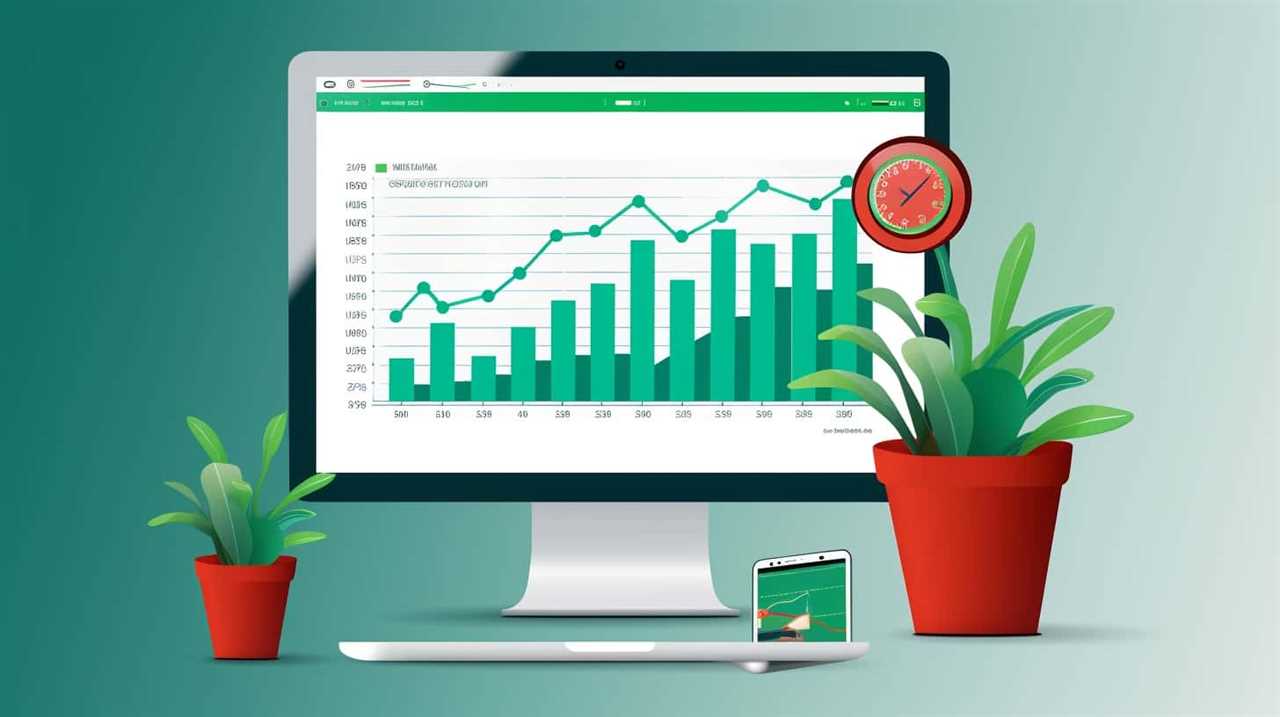Picture your bespoke framing business flourishing online. By leveraging Google Ads, we have the capability to attract your ideal audience, increase your earnings, and outperform your competition.
Our strategic approach optimizes your campaigns for maximum impact, while our analytical insights help track and analyze performance.
Stay ahead in the ever-evolving digital market and paint a masterpiece of success with Google Ads for custom framing shops.
Let’s turn your vision into a digital reality.

Key Takeaways
- Effective ad copywriting and targeting the right audience are crucial strategies for success in Google Ads.
- Continuous analysis and refinement of campaigns through tracking and analyzing performance data is essential for maximizing ROI.
- Data-driven decision making, based on metrics such as click-through rates and conversion rates, leads to increased sales and digital success.
- Additional strategies for digital success include analyzing market trends, tailoring campaigns to customer preferences, and embracing mobile marketing.
Understanding the Power of Google Ads
Understanding the power of Google Ads is essential for custom framing shops to effectively reach and engage their target audience. In today’s digital world, where competition is fierce and attention spans are short, it’s crucial for businesses to employ effective strategies to stand out from the crowd. Google Ads provides custom framing shops with a powerful platform to showcase their products and services, driving traffic to their websites and increasing conversion rates.
To make the most of Google Ads, custom framing shops need to focus on effective ad copywriting. Crafting compelling and persuasive ad copy is key to capturing the attention of potential customers and enticing them to click on your ads. By incorporating relevant keywords and highlighting the unique selling points of your custom framing services, you can create ads that resonate with your target audience.
Additionally, it’s important to constantly analyze and refine your Google Ads strategies. Regularly reviewing the performance of your ads and making data-driven adjustments will help you optimize your campaigns and maximize your return on investment. Testing different ad formats, targeting options, and bidding strategies can help you find the winning combination that drives the most conversions for your custom framing shop.
Targeting the Right Audience for Custom Framing Shops
To effectively target the right audience, custom framing shops must identify their ideal customers and tailor their Google Ads campaigns accordingly. Identifying niche markets is crucial in this process. By understanding the specific needs, preferences, and interests of their target audience, custom framing shops can create targeted ads that resonate with potential customers.

One way to reach the right audience is by utilizing social media advertising. Platforms like Facebook and Instagram offer powerful targeting options that allow custom framing shops to narrow down their audience based on demographics, interests, and behaviors. By strategically placing ads on these platforms, custom framing shops can reach individuals who are more likely to be interested in their services.
When targeting the right audience, it’s important to consider factors such as age, gender, location, and personal interests. Custom framing shops can use Google Ads’ audience targeting features to refine their campaigns and ensure they’re reaching the right people. By leveraging data and analytics, custom framing shops can continuously optimize their ads to reach their ideal customers and maximize their return on investment.
Optimizing Google Ads for Increased Sales
How can we effectively optimize our Google Ads campaigns to increase sales for custom framing shops? This is a question that many custom framing shop owners ask themselves in their pursuit of digital success. By improving ad relevance and maximizing the ad budget, we can ensure that our Google Ads aren’t only reaching the right audience but also generating the desired sales.
To achieve this, here are four key strategies to consider:

- Conduct thorough keyword research:
By identifying the most relevant keywords related to custom framing, we can target our ads to people actively searching for these services. This will help us increase the relevance of our ads and attract potential customers who are more likely to make a purchase. - Implement ad extensions:
Ad extensions provide additional information and call-to-actions within our ads. By including extensions such as location, call, and site link extensions, we can maximize the visibility and impact of our ads, increasing the chances of attracting potential customers and driving sales. - Use compelling ad copy:
Crafting persuasive and relevant ad copy is essential to capture the attention and interest of our target audience. By highlighting the unique benefits and value propositions of our custom framing services, we can entice potential customers to click on our ads and explore our offerings. - Continuously analyze and optimize:
Regularly monitoring and analyzing the performance of our Google Ads campaigns is crucial for identifying areas of improvement. By analyzing metrics such as click-through rates, conversion rates, and cost per conversion, we can optimize our campaigns to generate maximum sales while minimizing costs.
Tracking and Analyzing Campaign Performance
We track and analyze the performance of our Google Ads campaigns to gain valuable insights and optimize our custom framing shop’s digital success. Tracking and analyzing campaign performance is crucial for campaign optimization and measuring ROI. By closely monitoring the performance of our Google Ads campaigns, we can determine which keywords, ad placements, and targeting strategies are driving the most conversions and revenue for our custom framing shop.
To track the performance of our campaigns, we utilize various metrics such as click-through rates (CTR), conversion rates, and cost per acquisition (CPA). These metrics provide us with valuable data that allows us to make data-driven decisions and optimize our campaigns for maximum performance. For example, if we notice that a particular keyword has a low CTR and high CPA, we can adjust our bidding strategy or refine our ad copy to improve its performance.
In addition to tracking metrics, we also analyze the data to identify trends and patterns. For instance, we may discover that our ads perform better on specific days or at certain times of the day. Armed with this information, we can adjust our ad scheduling to ensure that our ads are shown during the most optimal times for our target audience.
Staying Ahead in the Competitive Digital Market
As custom framing shop owners, staying ahead in the competitive digital market requires continuous adaptation and innovation. In order to thrive in this ever-evolving landscape, we must employ effective digital marketing strategies and advertising techniques.

Here are four key approaches to help us stay ahead:
- Embrace data-driven decision making: By analyzing market trends, customer preferences, and campaign performance metrics, we can make informed decisions that maximize our advertising efforts.
- Harness the power of social media: Engaging with our target audience on platforms like Facebook, Instagram, and Pinterest allows us to showcase our unique framing styles and build brand loyalty.
- Optimize our website for search engines: Implementing SEO techniques will ensure that our website ranks higher in search engine results, making it easier for potential customers to find us.
- Embrace mobile marketing: With the majority of internet users accessing the web through their mobile devices, it’s crucial to optimize our digital presence for mobile users, ensuring a seamless experience across all devices.
Frequently Asked Questions
How Much Does It Cost to Set up a Google Ads Campaign for a Custom Framing Shop?
Setting up a Google Ads campaign for a custom framing shop can vary in cost. However, it’s important to consider the effectiveness of Google Ads in reaching your target audience and driving conversions.
Can Google Ads Help Increase Foot Traffic to My Physical Custom Framing Shop?
Yes, Google Ads can significantly increase foot traffic to our physical custom framing shop. By leveraging the effectiveness of Google Ads and measuring the ROI, we can strategically attract more customers and achieve digital success.
Are There Any Limitations or Restrictions on the Types of Images or Designs That Can Be Promoted Through Google Ads for Custom Framing Shops?
When considering the types of images or designs that can be promoted through Google Ads for custom framing shops, it is important to understand any limitations or restrictions.

How Long Does It Typically Take to See Results and Sales Increase After Implementing Google Ads for a Custom Framing Shop?
Typically, it takes a few weeks to start seeing results and an increase in sales after implementing Google Ads for a custom framing shop. We measure success by monitoring the timeline of results.
Can Google Ads Target Specific Demographics or Geographic Areas to Reach a More Niche Audience for Custom Framing Services?
Yes, Google Ads offers targeting options that allow us to reach specific demographics and geographic areas. This helps us reach a more niche audience for our custom framing services. We can also strategically allocate our ad budget for optimal results.
Conclusion
In conclusion, Google Ads has proven to be an invaluable tool for custom framing shops. By targeting the right audience and optimizing their campaigns, businesses can achieve increased sales and stay ahead in the competitive digital market.
The power of Google Ads can’t be overstated – it’s a game-changer for any custom framing shop looking to picture digital success. So why wait?

Dive into the world of Google Ads and watch your business soar to new heights.










